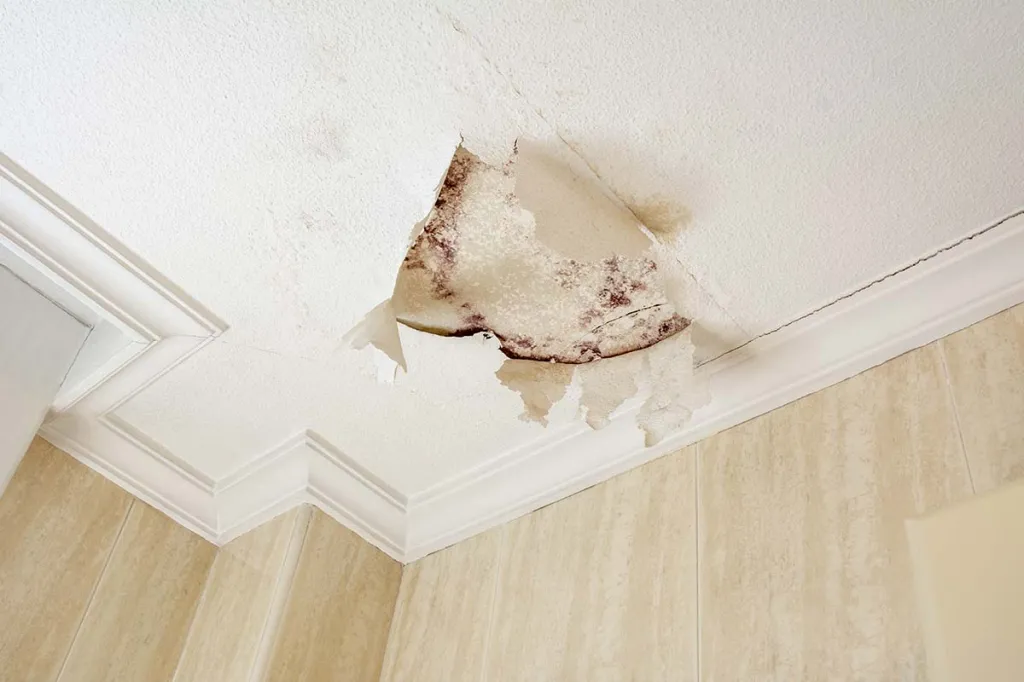What To Do With Water Bubble In Ceiling? Water damage can be a homeowner’s worst nightmare, and one of the common signs of water intrusion is the appearance of water bubbles in the ceiling. When you spot these unsightly and worrisome bubbles, it’s essential to address them promptly to prevent further damage to your home. In this article, we will explore the causes of water bubbles in the ceiling, what to do when you encounter them, and how to prevent such issues from happening in the first place.

Understanding Water Bubbles in the Ceiling
Water bubble in the ceiling are often the result of leaks or moisture accumulation. These bubbles can appear in various sizes and may be accompanied by discoloration or sagging of the affected area. To effectively address this issue, it’s crucial to understand their root causes:
- Roof Leaks: One of the primary culprits of water bubbles in the ceiling is a leaking roof. Roof leaks can occur due to damaged shingles, clogged gutters, or poor flashing. When rainwater penetrates through your roof, it can accumulate in your ceiling, leading to bubbles and water stains.
- Plumbing Issues: Faulty or damaged plumbing can also result in water bubbles in the ceiling. Leaking pipes, water supply lines, or drain lines may allow water to seep into your ceiling, causing visible damage over time.
- Condensation: In some cases, water bubbles may form due to condensation issues in your home. This often happens in areas with high humidity levels, such as bathrooms. The moisture in the air can accumulate in the ceiling, creating bubbles.
Dealing with Water Bubbles
When you discover water bubbles in your ceiling, it’s crucial to take immediate action to prevent further damage and potential safety hazards:
- Identify the Source: The first step in addressing water bubbles is to identify the source of the water intrusion. Check your roof for missing shingles, damaged flashing, or clogged gutters. Inspect your plumbing for any visible leaks. If condensation is the issue, consider improving ventilation in the affected area.
- Temporary Drainage: If the water bubbles are large and threatening to burst, carefully puncture them with a sharp object, such as a screwdriver. Be sure to place a bucket or container beneath to catch the water and prevent it from causing more damage to your ceiling.
- Consult a Professional: For significant or recurring water bubble issues, it’s best to consult a professional. A roofing contractor or a plumber can accurately diagnose the problem and provide the necessary repairs. Ignoring the issue could lead to more extensive and costly repairs down the road.
- Repair and Restoration: Once the source of the problem has been addressed, it’s time to repair and restore the damaged ceiling. This may involve patching, repainting, or even replacing the affected area. It’s essential to address the cosmetic damage to maintain the aesthetics and structural integrity of your home.
Preventing Water Bubbles in the Ceiling
Prevention is always better than cure. To avoid dealing with water bubbles in your ceiling, consider these preventative measures:
- Regular Roof Maintenance: Schedule regular inspections of your roof to check for damaged shingles, flashing issues, or clogged gutters. Maintaining your roof can help prevent leaks that lead to water bubbles in the ceiling.
- Plumbing Inspections: Periodically inspect your plumbing system for leaks or signs of wear and tear. Fix any issues promptly to prevent water damage.
- Proper Ventilation: Ensure proper ventilation in areas prone to condensation, such as bathrooms and kitchens. Properly venting moisture outside can help reduce the risk of water bubbles forming in your ceiling.
- Keep Gutters Clean: Maintain clean and debris-free gutters to ensure that rainwater flows away from your home rather than seeping into your ceiling.
Conclusion
Water bubbles in the ceiling are not only unsightly but also a sign of potential water damage and structural issues. Promptly identifying and addressing the root causes of these bubbles is crucial to prevent further damage to your home. By taking preventative measures and seeking professional help when needed, you can protect your home from the effects of water intrusion and keep your ceiling bubble-free for years to come. Remember, a well-maintained home is a happy home.